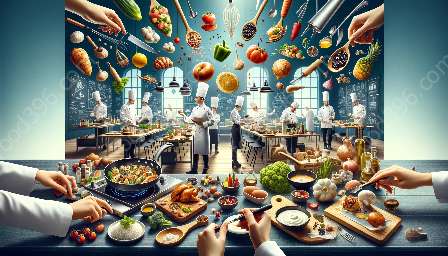When it comes to the culinary arts, understanding food costing and pricing is crucial for success, especially for those venturing into culinary arts entrepreneurship and undergoing culinary training. This comprehensive guide explores the intricate elements of food costing, pricing, and their relevance to the world of culinary arts.
Culinary Arts Entrepreneurship
Entrepreneurship in the culinary arts involves not only mastering the art of cooking but also understanding the business side of the industry. Successful culinary entrepreneurs need to have a sound grasp of food costing and pricing to manage their operations effectively. They must consider factors such as ingredient costs, labor, overhead, and profit margins. Moreover, they need to be adept at creating menus that are appealing to customers while also being financially sustainable.
Culinary Training
Aspiring chefs and culinary professionals undergo rigorous training to hone their culinary skills. However, an essential component of their education should also include an understanding of food costing and pricing. By learning how to analyze the costs of ingredients, portion sizes, and menu composition, culinary students can develop a well-rounded skill set that prepares them for the business aspects of their careers.
Exploring Food Costing
Food costing involves the process of calculating the expenses associated with creating a dish or a menu item. This includes the cost of ingredients, labor, and overhead. Understanding the intricacies of food costing allows culinary professionals to make informed decisions about pricing, portion sizes, and menu development.
Ingredient Costs
One of the fundamental aspects of food costing is analyzing the costs of individual ingredients. Culinary professionals need to consider the quality, seasonality, and availability of ingredients, as well as their market prices. By carefully assessing these factors, chefs and restaurant owners can optimize their ingredient sourcing and control their expenses.
Labor Costs
Labor costs play a significant role in food costing, especially in restaurant operations. Chefs and restaurateurs need to account for the wages of kitchen staff, as well as the time and effort required to prepare a dish. By factoring in labor costs, culinary professionals can determine the true cost of producing a menu item.
Overhead and Other Expenses
Aside from ingredients and labor, overhead costs such as rent, utilities, insurance, and equipment maintenance should also be considered in food costing. These indirect expenses contribute to the overall cost of running a culinary business and impact the pricing strategies that entrepreneurs employ.
Setting Prices
Once the food costing process is complete, culinary professionals can then move on to setting prices for their menu items. Pricing strategies involve a delicate balance between covering costs, meeting profit targets, and remaining competitive in the market.
Menu Engineering
Menu engineering is an essential aspect of pricing strategies in the culinary industry. By strategically positioning high-profit items and optimizing the layout and design of menus, chefs and restaurateurs can influence customer purchasing behavior and maximize their revenue.
Profit Margins
Determining the desired profit margin for menu items is crucial in setting prices. Culinary entrepreneurs must evaluate their financial goals and market positioning to ensure that their pricing aligns with their overall business strategy.
Adapting to Market Trends
In a dynamic culinary landscape, keeping abreast of market trends and consumer preferences is vital in pricing strategies. Culinary professionals need to be flexible and responsive to changes in the market to remain competitive and attractive to their target audience.
Conclusion
Understanding food costing and pricing is fundamental in the world of culinary arts. For culinary arts entrepreneurship, mastering these principles is essential for running a successful and profitable business. Moreover, incorporating food costing and pricing into culinary training programs equips aspiring chefs with the necessary skills to navigate the financial aspects of their careers. By delving into the intricacies of food costing and pricing, culinary professionals can achieve both culinary and financial excellence.

